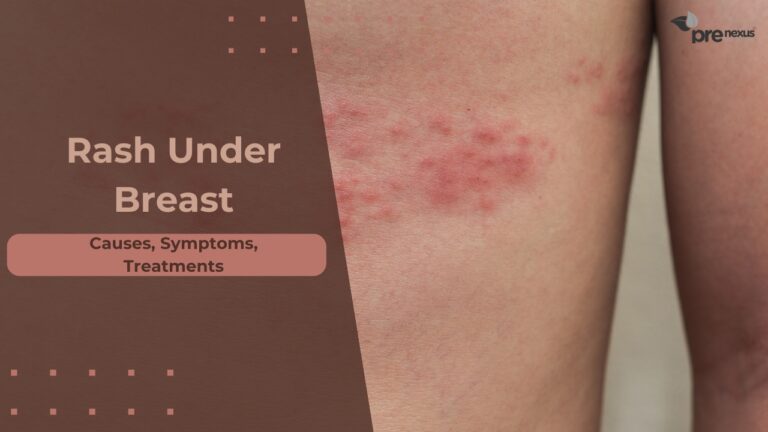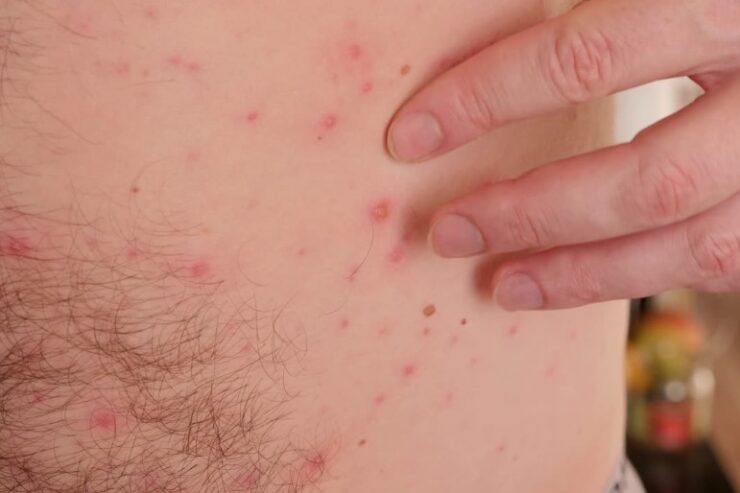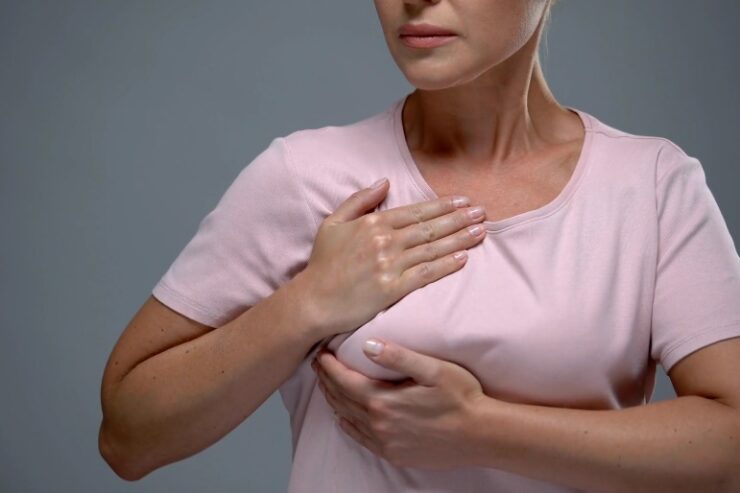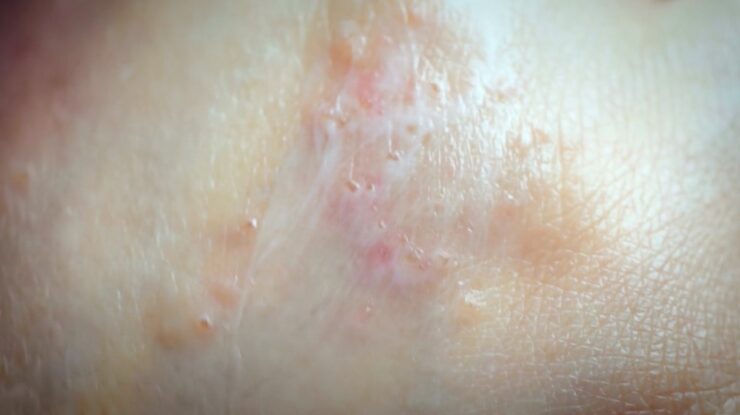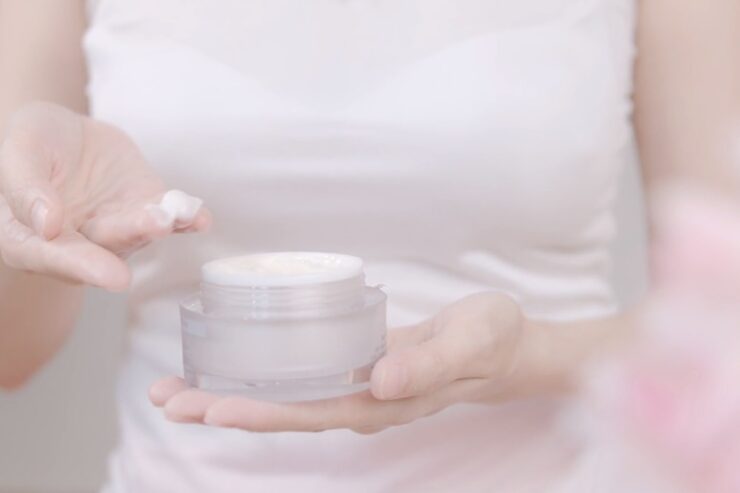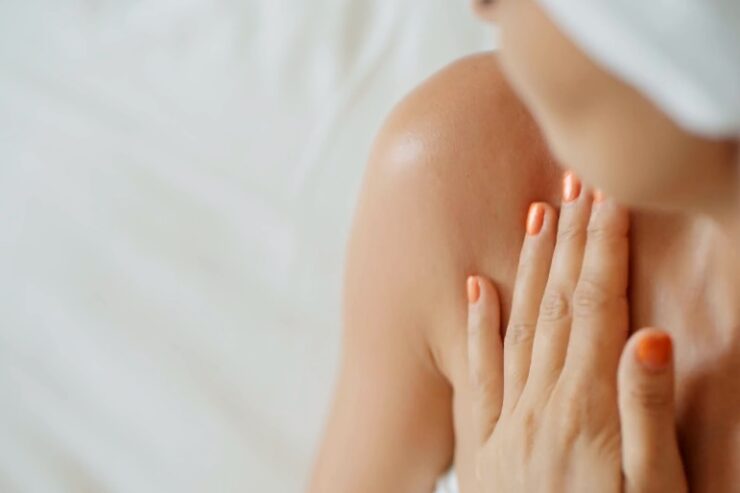A rash under the breast is not just a mere skin irritation as you might think at first; it’s a condition that has worried a lot of people, primarily due to its discomfort and the distress it can cause. While it’s pretty common, understanding its intricacies can help in its effective management and prevention.
This article aims to shed light on this prevalent condition, exploring its causes, symptoms, and the various ways to address it.
What does it look like?
A rash under the breast often presents itself as a reddened area, which can be intensely itchy. The manifestation of the rash can vary based on its cause, but some general symptoms include:
- Redness: A common sign of irritation or inflammation.
- Itching: Often the first and most persistent symptom.
- Pain or burning sensation: Common with infections or severe inflammation that can cause underarm pain.
- Soreness: The affected area may feel tender to touch.
- Weeping or oozing: Sign of an active infection or severe irritation.
- Crusty skin: Often a result of dried oozing or weeping.
- Odor: Especially if there’s a bacterial or fungal infection, an unpleasant smell may emanate from the rash.
Underlying causes
The skin beneath our breasts provides a warm, moist environment, especially for those with larger breasts. This environment is conducive to the development of rashes due to several reasons:
1. Intertrigo
Intertrigo tops the list as the most common cause. As explained by Cleveland Clinic, it’s a skin irritation that predominantly occurs in areas where skin folds over itself, such as under the breasts, armpits, and groin. The main culprits behind intertrigo are:
- Moisture: Excessive sweating or lack of proper air circulation can lead to moisture buildup, creating a perfect environment for skin irritation.
- Friction: Continuous rubbing of skin against the skin can exacerbate the irritation.
- Heat: Warm environments can intensify the moisture and friction, worsening the condition.
2. Allergic Reactions
Certain products that come into contact with the skin can trigger allergic reactions. Common allergens include:
- Laundry detergents
- Soaps
- Lotions or other skincare products
3. Yeast Infection
As stated in the NCBI study, an overgrowth of the Candida yeast can lead to fungal infections. The warm and moist environment under the breast is conducive to yeast proliferation.
4. Bacterial Infection
Bacteria can enter through tiny cracks in the skin, especially in a moist environment, leading to infections.
5. Eczema
Also known as atopic dermatitis, eczema results in itchy, inflamed skin. According to the National Eczema Association, it can be triggered by various factors, including environmental irritants or stress.
6. Psoriasis
This autoimmune condition causes the rapid buildup of skin cells, leading to red, scaly patches that can be itchy and painful.
7. Contact Dermatitis
This is a direct reaction to something that irritates the skin or an allergic response to an allergen. Common culprits include fragrances, fabrics, and cosmetics.
8. Heat Rash
Also known as prickly heat, this rash occurs when sweat ducts become blocked and sweat cannot get to the skin’s surface.
9. Hidradenitis Suppurativa
This is a painful condition where small lumps form under the skin, often in areas where skin rubs together.
Who is at risk?
While it’s a misconception that only individuals with larger breasts are prone to this condition, they are indeed at a higher risk due to the increased skin-to-skin contact and potential for sweat accumulation. However, anyone, irrespective of their breast size, can develop a rash under the breast.
Factors like living in humid environments, frequent vigorous activities, or having a compromised immune system can increase the likelihood of experiencing this condition.
Treatments
1. Prioritize hygiene
Keep the area beneath the breast clean and dry. Gently cleanse the area with mild soap and water, pat dry thoroughly, and ensure proper air circulation to keep the skin dry.
2. Antifungal creams
- For: Yeast infections, which are caused by an overgrowth of the Candida fungus.
- Examples: Clotrimazole, miconazole, and other over-the-counter antifungal creams.
- Application: Apply as directed, usually once or twice daily until the rash subsides.
3. Antibiotic creams
- For: Bacterial infections.
- Examples: Bacitracin, polysporin, and other topical antibiotics.
- Application: Use as per the instructions, ensuring the entire affected area is covered.
4. Hydrocortisone cream
- For: Reducing itching, inflammation, and redness.
- Application: Apply a thin layer to the affected area, usually up to twice daily or as directed by a physician.
5. Oral antibiotics
- For: Severe rashes or those that don’t respond to topical treatments.
- Prescription: Always consult with a healthcare professional before starting oral antibiotics.
How to avoid this condition?
1. Opt for breathable clothing
To reduce moisture buildup and friction, choose loose-fitting clothes made from natural fibers like cotton, which allow the skin to breathe.
2. Control sweating
Excessive sweating can exacerbate rashes. Stay in cool environments, use fans, and avoid strenuous activities in hot weather.
3. Maintain regular hygiene
Clean skin is less prone to rashes. Shower regularly, especially after activities that cause sweating. Dry the under-breast area thoroughly.
4. Use absorbent powders
To absorb excess moisture, apply a thin layer of talc-free powder under the breasts.
5. Rotate and clean bras
Damp bras can be a breeding ground for fungi and bacteria. Change bras if they become damp from sweat and wash them regularly.
FAQ
I’m a dermatologist who loves studying and treating skin (obviously). I went to medical school and chose dermatology because I wanted to help people with skin problems. I’m dedicated to helping people feel better about their skin (and in it).
Related Posts:
- Rashes From Pads: Causes, Symptoms, Treatments, How…
- Underarm Pain Causes – Left, Right, Breast, & Sharp…
- How to Avoid Scams and Surf The Internet Safely -…
- Itchy Palms: Causes, Symptoms, Remedies, and Treatment
- Frequent Urination with Diabetes - Causes, Symptoms,…
- How to Get Rid of Dark Inner Thighs + Causes,…

